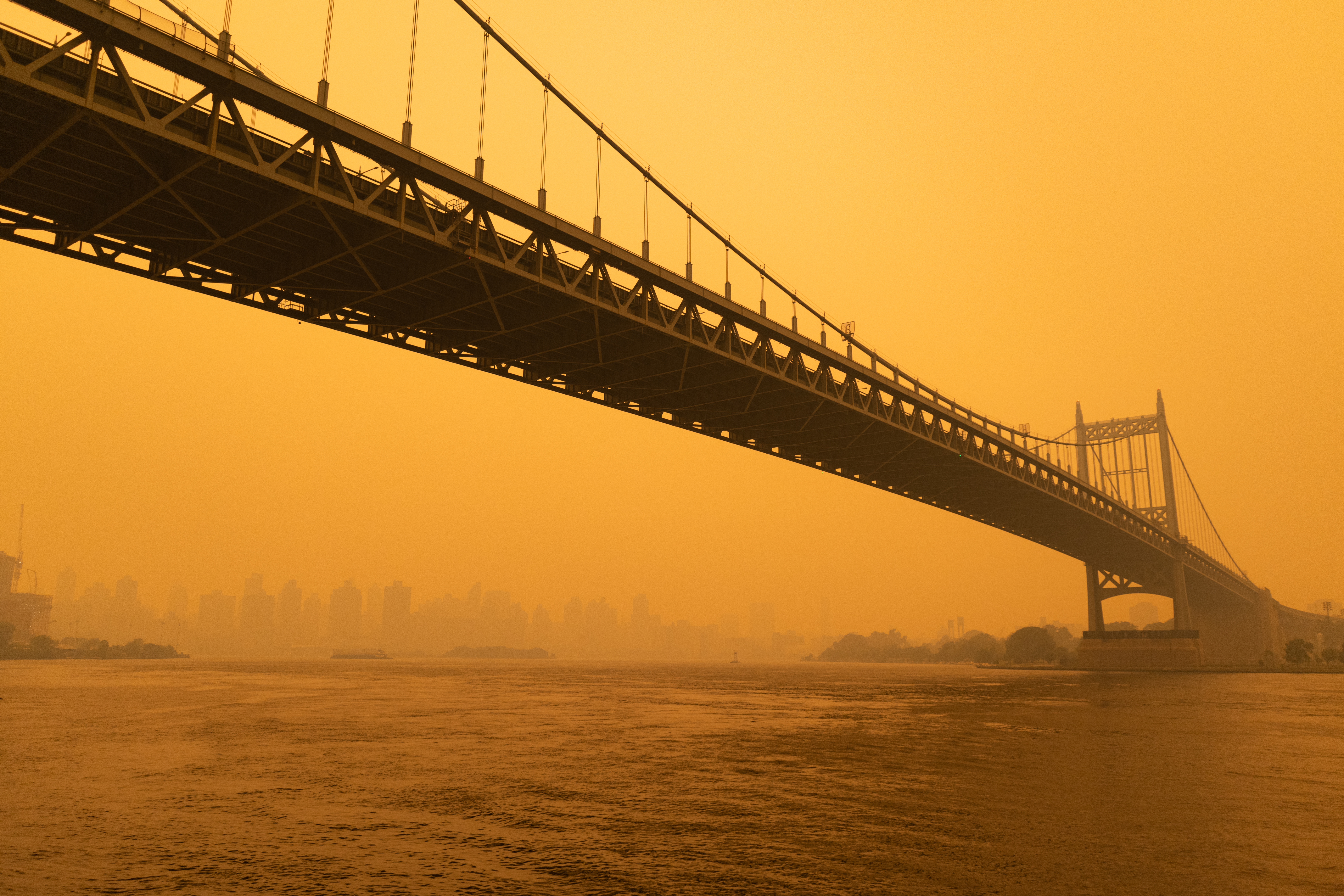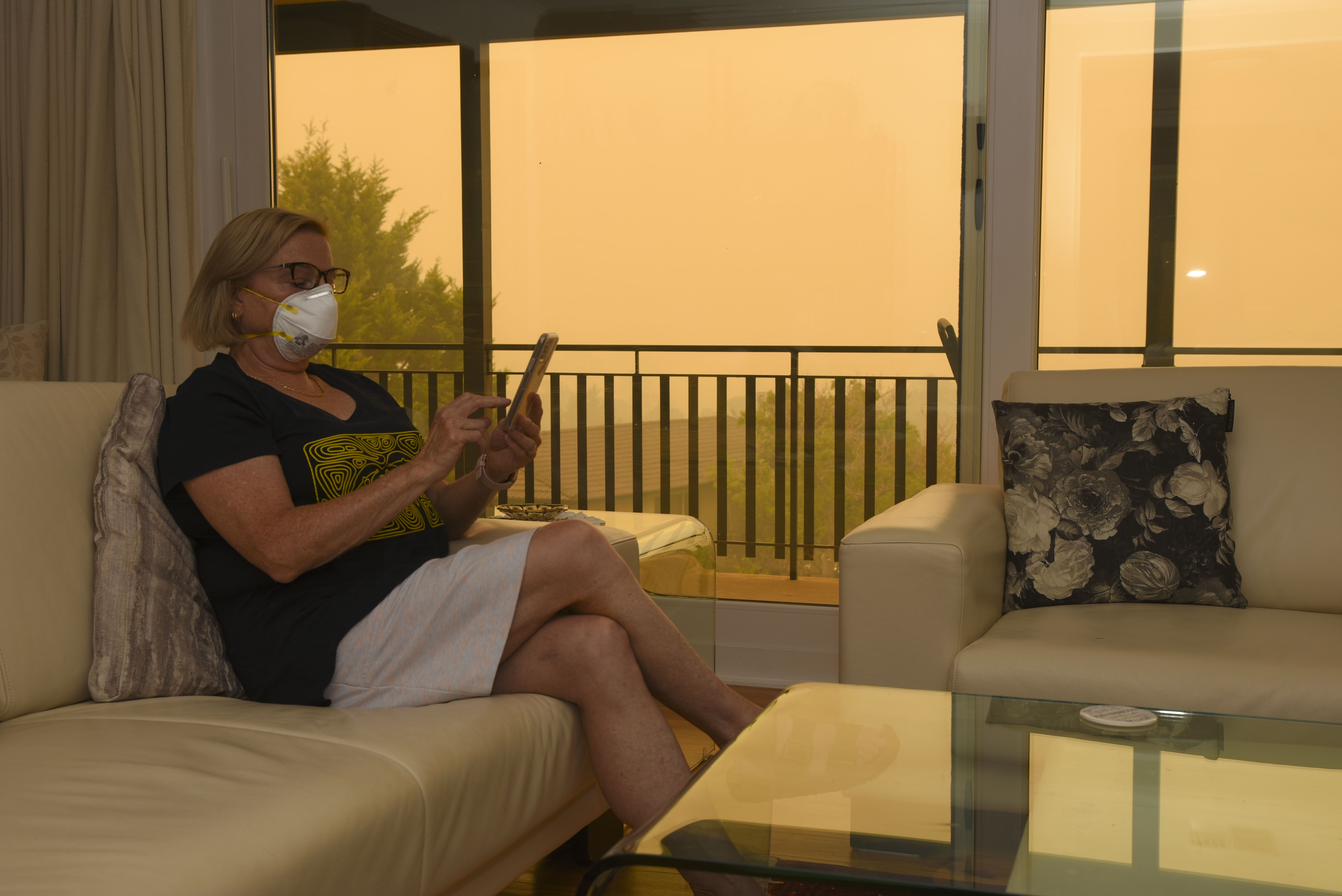On June 7, 2023, New York City officials issued an urgent air quality alert. Flights were grounded, sporting events and theatre performances cancelled. Officials urged residents to wear face masks and stay indoors. Was it a surge of a dangerous respiratory issue? Yes, but not the one you may be thinking of.
While the approach to keeping New Yorkers safe that day was similar to the Covid-19 pandemic, the health concern in the summer of 2023 was wildfire smoke. The smoke itself didn’t even originate in New York. More than 100 wildfires in Canada sent thick clouds of smoke that settled over the United States’ most populous city and other major metropolitan areas that summer.
This memorable incident drew attention to an important fact: Wildfires can impact people even when they’re hundreds of miles away.
This means that no one is immune from these effects, and wildfire threats will continue. Effective home air purification is essential to keep yourself and your family safe. Here’s how to choose the right technology to keep your home air smoke-free.
How does wildfire smoke affect people?
Many people don't realize that, unlike other airborne contaminants, smoke is actually a liquid. Its particulates are incredibly small (it meets the criteria for PM 2.5, “particulate matter” (PM) measuring 2.5 micrometers or smaller). At one-thirtieth the diameter of a human hair, this fine particulate matter poses a much greater health risk than other pollutants.
“Anything with lungs, anything that draws air or has a lung system, is going to be affected by wildfire smoke,” says Ken Nelson, group manager for Panasonic Eco Systems. “PM 2.5 particulates can pass through your lungs into your bloodstream, reaching the bone marrow, where they can break DNA strands and potentially cause diseases like leukemia and cancer.” This is in addition to more well-known effects of smoke, including respiratory infections, asthma, reduced lung function, and heart conditions.
PM 2.5 is among the factors considered in the Air Quality Index (AQI) used nationwide to monitor air quality. An AQI of less than 50 poses little to no risk to health, while 51-100 poses a moderate risk. By 101, sensitive groups should take caution.
During New York’s wildfire smoke period, the AQI rose as high 484; the scale’s maximum score is 500.
Prevent wildfire smoke from affecting your indoor air quality
Relieving the effects of most airborne contaminants usually starts with what Nelson calls “source management.” Ideally, you wouldn’t allow wildfire smoke inside your house. However, wildfire smoke is extremely difficult to prevent or avoid. Even if you live hundreds of miles from the source of the wildfire, you're not necessarily safe from smoke exposure.
“Generally speaking, the air quality outside is better than your indoor air quality,” Nelson says. “But with wildfires, that’s reversed. So we have to look for ways to defend ourselves against it, and that starts will really great filtration.”
Nelson says air purifiers with a specific series of filters will do the best job keeping wildfire smoke out of your home:
- MERV 13 filters: Minimum efficiency reporting value, or MERV, ratings classify filters based on the size particle they can capture. MERV 13 is the highest rating on the scale and can handle the fine PM 2.5 particles in wildfire smoke.
- HEPA filters: HEPA, or high efficiency particulate air filters, are finer than MERV filters. They can manage particles as small as 0.3 microns.
- Carbon filters: According to Nelson, carbon filters have the best function against wildfire smoke. That's because the carbon attracts the smoke and holds it.
Standalone air purifiers featuring any of these filter types (or multiple filters in combination) can improve the air quality in your home room by room. Better yet, build filtration into your ventilation system to regularly scrub contaminants from the air in your house. Panasonic offers products such as the WhisperFresh® Select ventilation fan and Intelli-Balance® series of energy recovery ventilators to do just that.
Important notes about air purifiers & wildfire smoke
In addition to having the right filters to combat wildfire smoke, finding the right air purifier for your home includes considerations around the size of the room you’re treating, the unit’s noise level, maintenance requirements, and more.
Of these factors, Nelson says maintenance is the most important for homeowners to pay attention to.
“The one downside to all these filters is that the denser or finer the filters are, the easier they can get choked by the particles they’re filtering,” Nelson says. “A heavy load of pollen, for instance, will completely stop the airflow.” But because wildfire smoke is a liquid, it will actually start to move past the fibers of worn-out filters over time. And while carbon filters hold onto smoke, they have a finite capacity. It’s important to discard them once they reach that capacity.
That means homeowners must be diligent about replacing filters regularly. And “regularly” does not necessarily mean on a set schedule. Nelson says homeowners should change their filters after every wildfire event. Carbon filters can reach capacity after as little as two weeks in wildfire-prone areas. In general, Nelson says, you should change all ventilation filters when they’re dirty, whether that's a few months or a few weeks.
Preparing for an intense wildfire season
In the U.S. alone, more than 56,000 wildfires occurred in 2023. That’s on top of nearly 70,000 the year before. The U.S. Department of Health and Human Services says that conditions are ripe for another intense wildfire season in 2024. Since smoke from wildfires poses a significant threat to indoor air quality and health even outside common fire zones, you should start thinking now about how to protect the air in your home.
By understanding the importance of proper air filtration, selecting the right air purifier, and following additional indoor air quality improvement tips, you can protect yourself and your family from the harmful effects of wildfire smoke no matter where you live. When you’re ready to act, check out Panasonic’s comprehensive suite of indoor air quality solutions.





